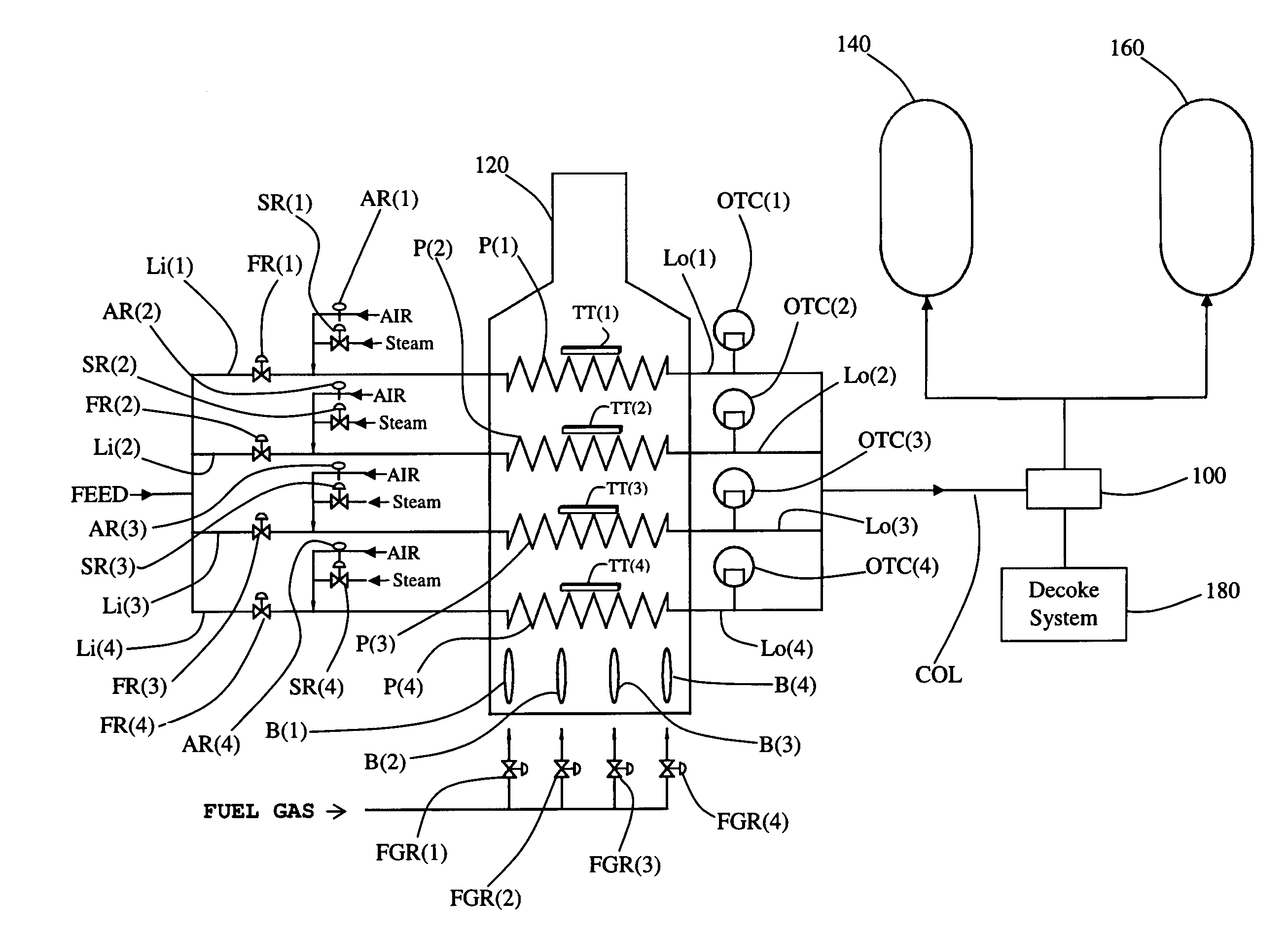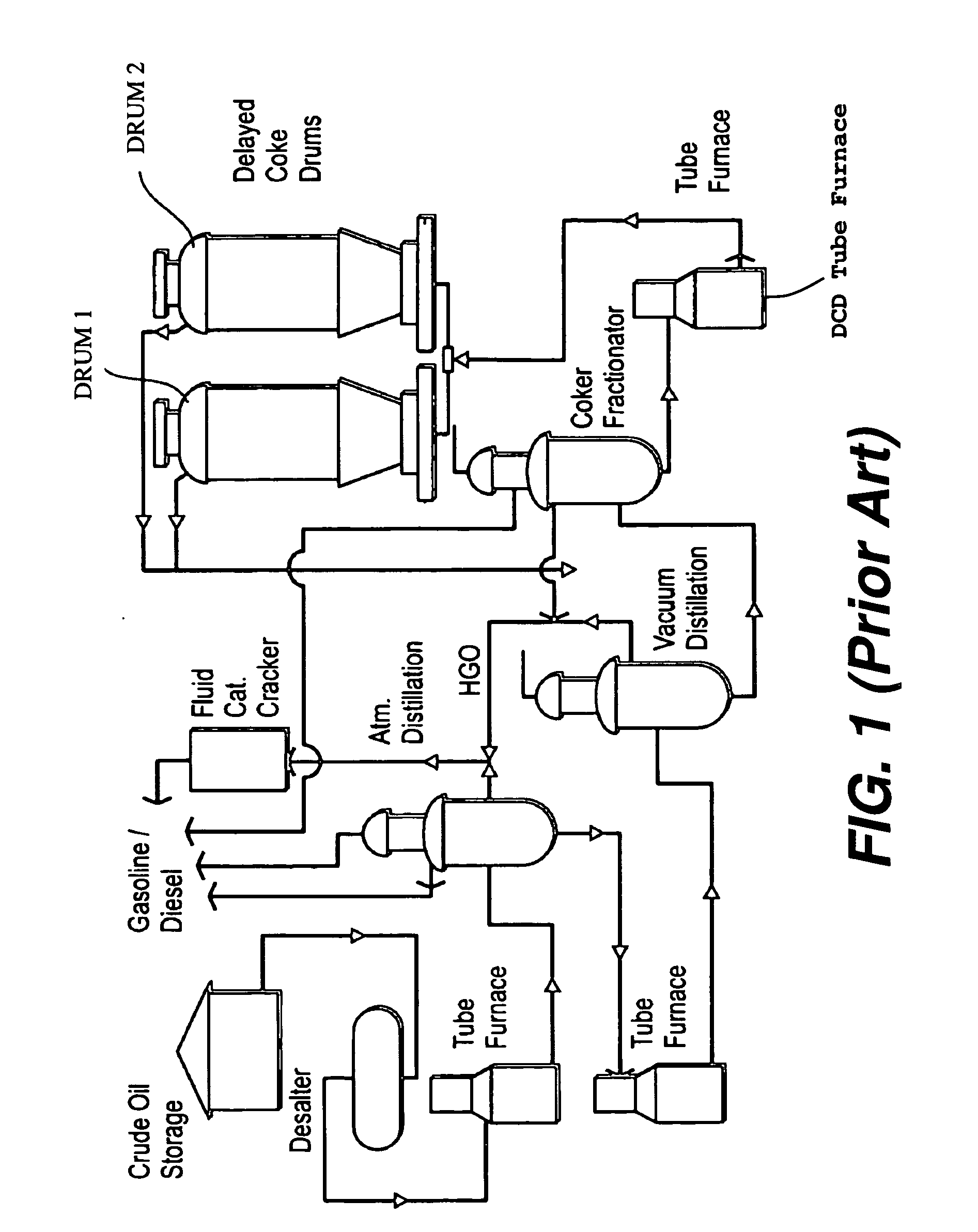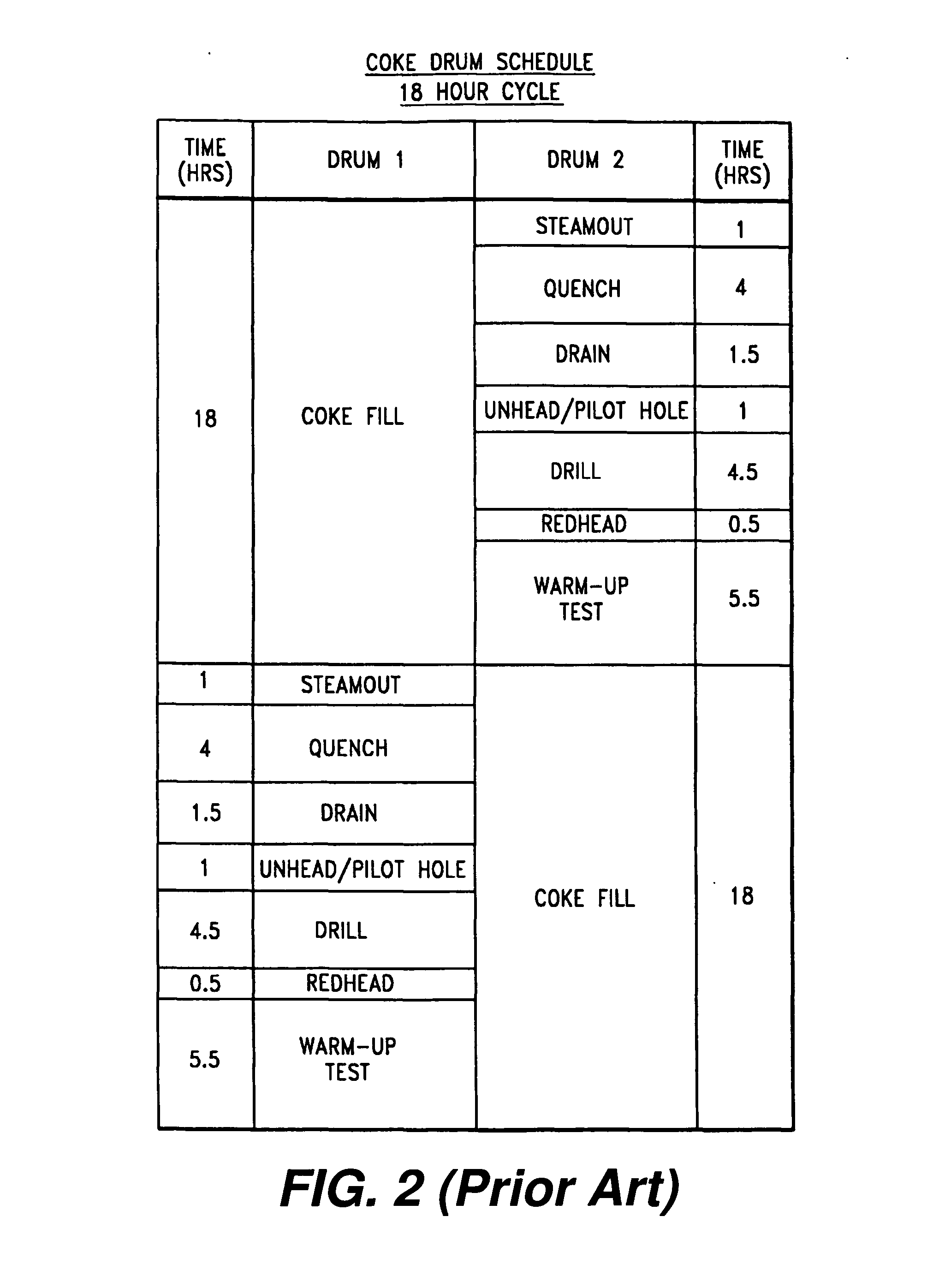Method and apparatus for decoking tubes in an oil refinery furnace
a technology of oil refinery furnace and decoking tube, which is applied in lighting and heating apparatus, separation processes, instruments, etc., can solve the problems of furnace tube fouling, and furnace tube fouling of each pass
- Summary
- Abstract
- Description
- Claims
- Application Information
AI Technical Summary
Benefits of technology
Problems solved by technology
Method used
Image
Examples
first embodiment
[0039]FIG. 3 shows a not-to-scale schematic layout of the present invention in which a 3-way valve 100 is deployed immediately downstream of a tube furnace 120 and is used to direct removed carbon deposits in the combined output line COL to the decoke system 180 (e.g., during decoke operations) or to direct heated feed (a petroleum product) to the delayed coke plant as represented respectively by first and second coke drums 140 and 160, which operate in batch-continuous mode. The tube furnace 120 is shown made up of plurality of passes, in this example of a tube furnace there are four passes, i.e., passes P(1) through P(4). It should be understood that the number of passes in the tube furnace 120 can vary, can be more than four or can be less than four. Explanation of the part numbers and labels shown in FIG. 3 are found in Table 1. The term “multi-pass” and “plurality of passes” are regarded as equivalent terms.
[0040]It should be expressly understood that the present invention is n...
second embodiment
[0052]FIG. 9 shows a not-to-scale schematic layout of the present invention in which a 4-way valve 105 is deployed downstream of a tube furnace 120. During normal operation the four-way valve 105 is set to direct the feed in combined output line COL to one of a pair of delayed coke drums 140 and 160. As explained previously, the delayed coke drums 140 and 160 operate in continuous-batch mode. The tube furnace 120 is multi-pass tube furnace made up of a plurality of passes, in this example of a tube furnace there are four passes, i.e., passes P(1) through P(4). It should be understood that the number of passes in the tube furnace 120 can vary, can be more than four or can be less than four. Explanation of the part numbers and labels shown in FIG. 9 are found in Table 1.
[0053]Still referring to the second embodiment, furnace 120 continues operating so long as the number of passes that meet or exceed their allocated SIFR does not fall below a predetermined number. For example, for a fu...
third embodiment
[0056]With reference to FIG. 13, which speaks to the present invention, a three-way valve 100 is located on every output line Lo(1 through N) thereby allowing each pass to be decoked separately.
PUM
 Login to View More
Login to View More Abstract
Description
Claims
Application Information
 Login to View More
Login to View More - R&D
- Intellectual Property
- Life Sciences
- Materials
- Tech Scout
- Unparalleled Data Quality
- Higher Quality Content
- 60% Fewer Hallucinations
Browse by: Latest US Patents, China's latest patents, Technical Efficacy Thesaurus, Application Domain, Technology Topic, Popular Technical Reports.
© 2025 PatSnap. All rights reserved.Legal|Privacy policy|Modern Slavery Act Transparency Statement|Sitemap|About US| Contact US: help@patsnap.com



